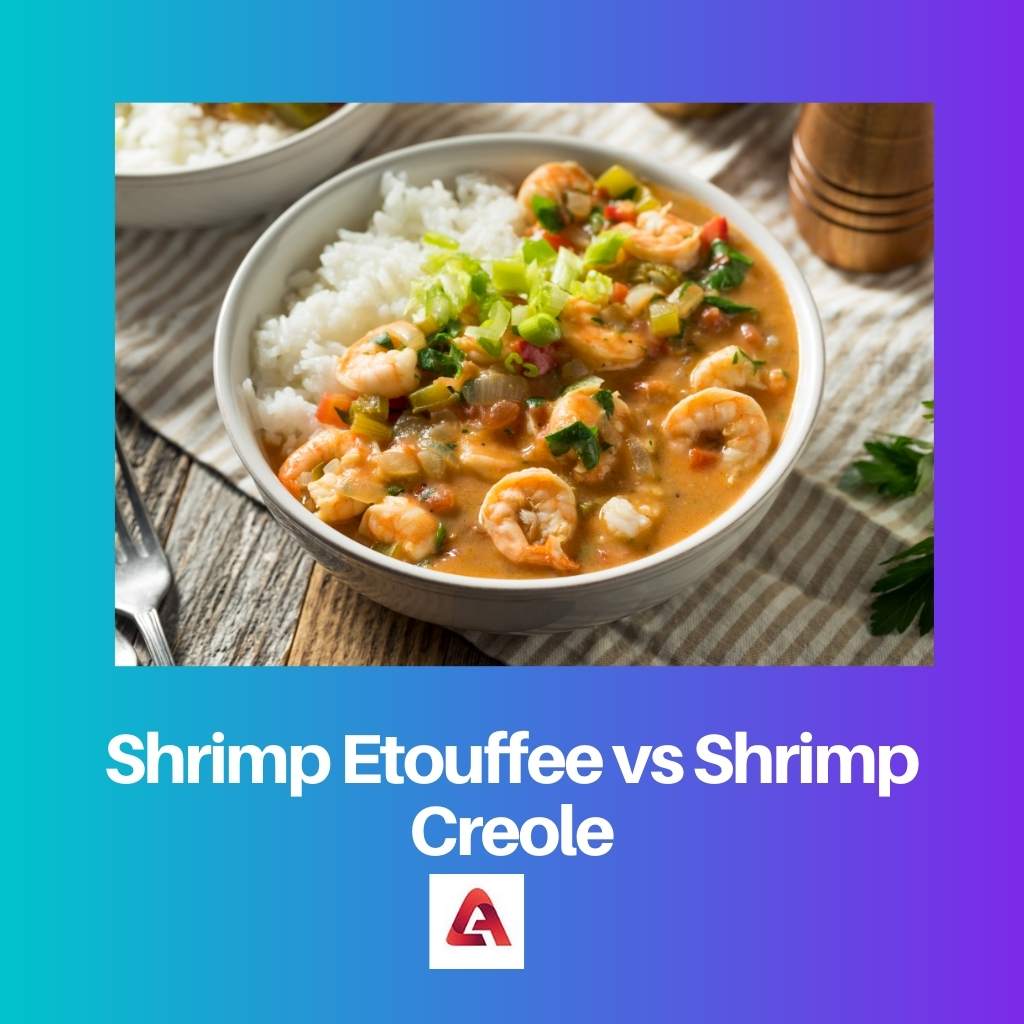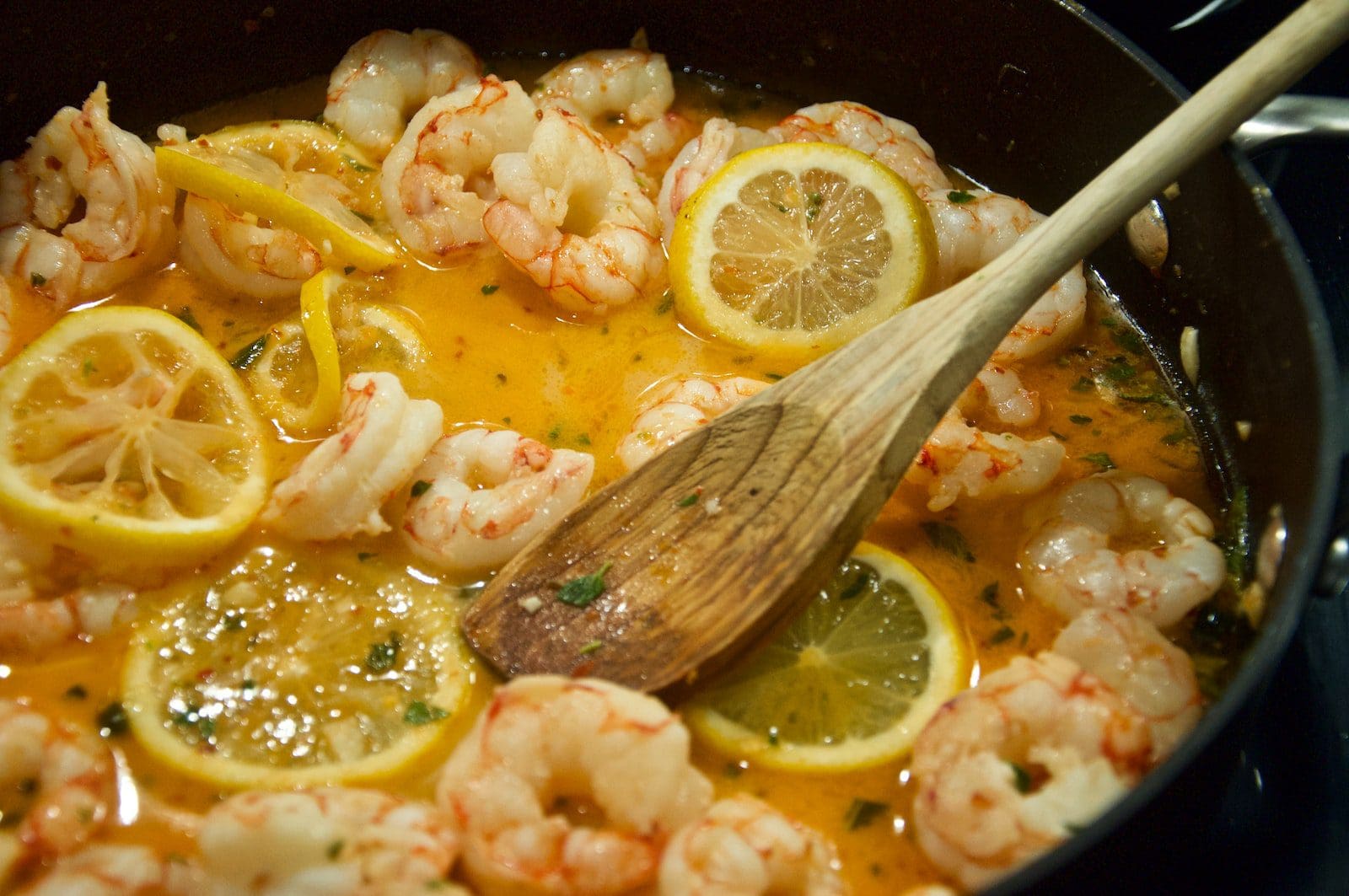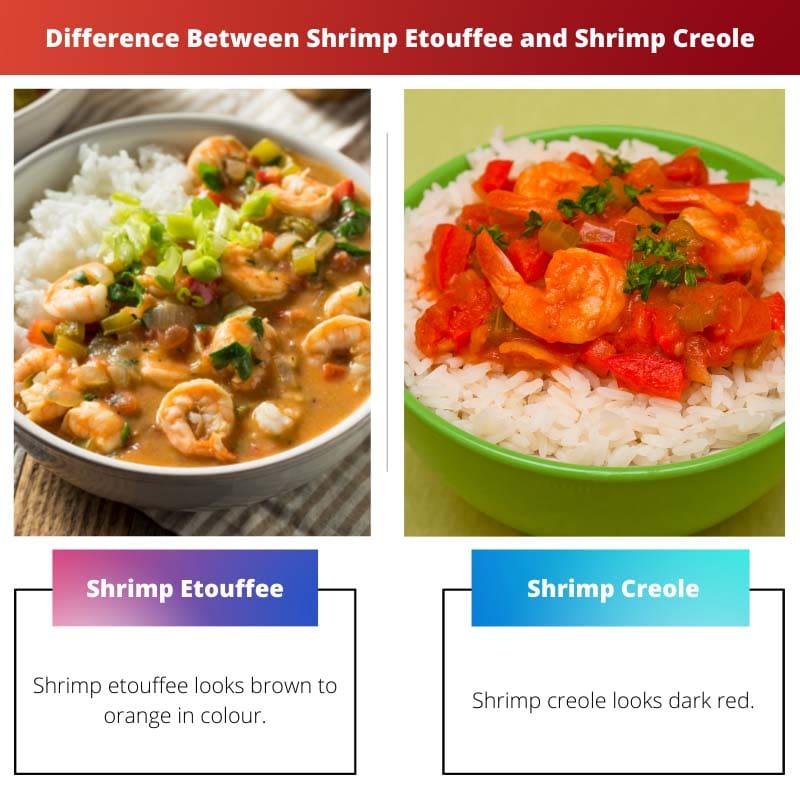Both as a cook and as an eater gives the cook and the outstanding eater versatility through its dynamically evolving recipes. Two almost similar shrimp dishes are shrimp creole and shrimp etouffee.
In this article, we will have a detailed study on the differences between shrimp creole and shrimp etouffee so that when you visit a restaurant, you will not be stuck in the dilemma of choosing shrimp creole or shrimp etouffee.
Key Takeaways
- Shrimp Etouffee is a Cajun dish made with a roux-based sauce and served over rice, while Shrimp Creole is a Creole dish made with a tomato-based sauce and served with rice.
- Shrimp Etouffee is made with a blonde roux, while Shrimp Creole is made with a darker roux.
- Shrimp Etouffee has a smoother and creamier texture, while Shrimp Creole has a more tomato-based and slightly spicy flavor.
Shrimp Etouffee vs. Shrimp Creole
Shrimp etouffee is a type of cajun dish. Roux sauce is used to make shrimp etouffee. It is a spicy dish which is served with rice. The gravy present in shrimp etouffee is thick. Shrimp creole is a type of creole dish. Tomatoes are used as a base to make shrimp creole. It is served with rice. It is a less spicy dish. The gravy present in shrimp creole is thin.

In shrimp etouffee, thicker sauce gravy is present. Shrimp etouffee looks brown to orange in color. Thick roux is added as a base in shrimp etouffee. Shrimp etouffee is spicier in comparison to shrimp creole.
Shrimp creole has a thinner sauce than gravy. Shrimp creole looks dark red. The base added to shrimp creole is tomatoes. Rice, tomatoes, peppers, and okra are essential to prepare shrimp creole.
Comparison Table
| Parameters of Comparison | Shrimp Etouffee | Shrimp Creole |
|---|---|---|
| Texture of sauce | Thicker sauce | Thinner sauce |
| Appearance | Shrimp etouffee looks brown to orange in color. | Shrimp creole looks dark red. |
| Base used | Thick roux | Tomatoes |
| Spicy | Shrimp etouffee is spicier. | Shrimp creole is less spicy. |
| Basic ingredients | Shrimps, rice, peppers, green onions, roux, celery. | Shrimp, rice, tomatoes, peppers, okra. |
What is Shrimp Etouffee?
Shrimp etouffee has a different fan base from the many standard etouffee dishes available. For most shrimp etouffee dishes, crawfish is considered an ideal ingredient.
This dish is a lot on the spicier side. The tangy taste of shrimp etouffee is firmly attributed to adding cayenne pepper. This dish has a thick gravy and saucy texture.
The base of this recipe is made by combining wheat flour with butter, which is the roux. Roux is a thickening agent, and its light version is used while preparing shrimp etouffee.

What is Shrimp Creole?
Shrimp creole and shrimp etouffee are relative to each other. However, tomatoes are the main ingredient used to prepare the base. In shrimp creole, shrimp pieces are decorated and served over the rice.
In comparison to ordinary etouffee, shrimp creole uses a thinner sauce. This dish looks reddish in terms of color. The essential ingredients used in shrimp creole preparation are shrimp, rice, peppers, okra, and tomatoes.
However, this dish has been originated from Louisiana Creole. That is the heritage of France, Spain, and Africa. This includes the cooked shrimp with mixed diced and whole tomatoes.
It includes seasoning, which is cayenne-based, and the serving takes place on boiled or steamed white rice. However, Creole dishes can be prepared using other seafood or meat instead of shrimp.

Main Differences Between Shrimp Etouffee and Shrimp Creole
- Shrimp etouffee is spicier in comparison to shrimp creole. On the contrary, shrimp creole is less spicy.
- The basic ingredients to prepare shrimp etouffee are shrimp, rice, peppers, green onions, roux, and celery. However, rice, tomatoes, peppers, and okra are essential to prepare shrimp creole.


It’s interesting to find out about the detailed ingredients and preparation methods of these two delightful dishes.
Absolutely! The article has offered valuable insights into the culinary world.
I’ve read quite a bit on similar topics, but this article has been exceptionally enlightening and clear.
I couldn’t agree more! The clarity and depth presented in the analysis is commendable.
Very informative and detailed article that helps to understand the differences between the two dishes. Thanks for sharing!
I agree, the article has been very well researched and explained. Great job!
I’ve always been curious about what makes shrimp etouffee and shrimp creole different. This was a great read. Thanks for the insight!
Definitely! Learning about these culinary distinctions is truly fascinating.
The comparative analysis provided in the article was excellent and helped in understanding the nuanced differences between the dishes.
It was indeed a great analysis! Such detailed explanations set this article apart.
This article has really expanded my knowledge about these two dishes. Clearly presented and very educational!
It’s always enriching to learn about culinary differences. This article is a great contribution to that.
The detailed comparisons have made it easy to understand and distinguish between shrimp etouffee and shrimp creole. Well done!
Absolutely! These insights have been incredibly valuable and enriching.
Indeed, the detailed nature of the article has been truly enlightening. It’s a great piece!
Understanding such culinary variations has been made simpler with this superb article. Kudos to the writer!
Absolutely. The article’s precision in detailing the distinctions between the two dishes is truly praiseworthy.
This article will undoubtedly be a reference point for anyone interested in delving further into the intricacies of these dishes.
I completely agree! A well-crafted piece shedding light on the differences between these culinary delights.
The content has been presented in an engaging and enticing manner, making the topic ever so captivating.